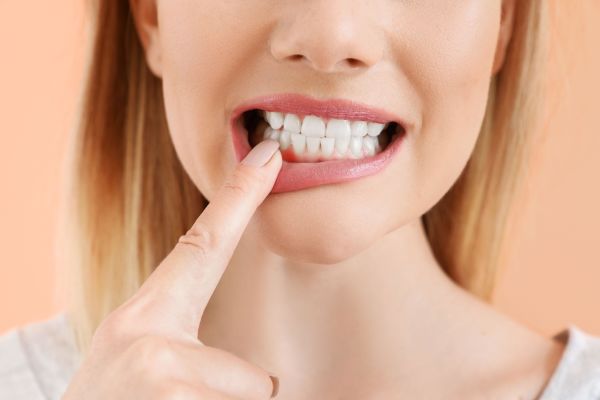
Gum Disease Treatment
Typical treatments for gum disease and how to prepare for your visit

Gum disease is a very common dental complaint affecting a significant percentage of UK adults. Left untreated it can quickly become a more severe stage of gum disease or periodontitis which can cause substantial detriment not only to your dental health but also your overall wellbeing.
In our companion article ‘What is Gum Disease?’ we look closely at the different forms of gum disease, and the tell-tale signs to watch for at home, as well as the initial causes and how to safeguard against them.
In this article we look closer at the different types of treatment available and what they might mean for you in terms of timeline, practicality, and what to expect.
The Treatment Types
Treatment types fall into 2 distinct categories, surgical and non-surgical.
The treatment used is indicated by the type and level of gum disease present. For early stage periodontitis less invasive procedures can often be used allowing for less mouth disturbance and quicker healing times.
Scaling and Root Planing
Scaling is the process of removing plaque and tartar above and below the gumline, this deep cleaning clears away bacterial debris including that lodged in deep pockets.
This is then followed by ‘Root Planing’, a necessary process of smoothing the root surface of each affected tooth. This helps to offset and actively discourage further bacterial build-up and to further remove any remaining bacterial by-products that may enhance inflammation or cause a potential delay to the healing process.
Antibiotics are also often suggested as a follow-up to scaling and root planing. These are used to help control bacterial infections. The type of antibiotic suggested might be a mouth rinse, or even a type of gel that is pushed into the tooth pockets or leftover gum spaces. Oral antibiotics may also be given to eliminate the infection causing bacteria completely from your system.
If your periodontitis is complicated, or at a more advanced stage, then surgical treatment will be needed. This is much more invasive and can require different approaches depending on the type of issue your dentist faces.
When surgery is needed
There are various types of dental surgery that can be applied to various types of periodontal presentation.
These include:
Flap surgery
Also known as Gingival Flap Surgery or Pocket Reduction Surgery, is a process whereby your dentist makes minute incisions into the gum line to be able to lift up that section of gum or ‘flap’. This allows greater access to the tooth roots where they can be much more effectively scaled and planed. It also allows access to the underlying bone which may be reshaped if bone loss has occurred. Once these issues are addressed the gum flap is replaced and sutured. Once healed, these areas will now be much easier to clean and maintain.
Guided Tissue Regeneration
The intention of GTR is to allow bone to regrow that was initially eroded by bacteria. The dentist places a piece of bio-friendly fabric between the existing bone and the target tooth, the fabric itself prevents unwanted gum tissue from accessing the area that is healing, allowing the bone to grow back naturally.
Soft Tissue Grafting
As a result of gum tissue loss, your gumline will be pulled back, or ‘recede’. When this happens, the remaining soft tissue may need to be reinforced. This is often done by taking a small section of tissue from the roof of your mouth or using donated tissue and attaching it to the affected area of your gum. This can reduce the speed of gum recession, re-cover the exposed roots and make substantial aesthetic improvements to your smile.
Tissue Stimulating Proteins
This technique uses special gel applied directly onto the diseased tooth. The gel contains the identical proteins as found in natural tooth enamel and can stimulate the regrowth of healthy bone and tissue.
Bone Grafting
This procedure is only applied when you have lost the bone surrounding the root of the tooth. The graft itself can be comprised of pieces of your own bone, donated bone, or even a synthetic composite in some cases. Bone graft surgery helps to safeguard against tooth loss by securing the tooth in place. It can also provide a substantial platform for the natural regrowth of bone.
At-home prevention methods
Hopefully you will never need dental surgery, and there are many things that you can do at home to best look after your oral hygiene, and setup the best defence against gum disease.
To prevent and manage gum disease:
Brush your teeth at least twice a day for at least 2 minutes, focus on all areas of you teeth and gums. Brushing more than twice is also acceptable and encouraged. Do not brush at the same time as using mouthwash, as one can lessen the effect of the other.
Use a soft toothbrush to avoid damaging the soft tissue or scraping the tooth enamel, and replace every 3 to 4 months or when the toothbrush gets wiry.
Use interdental brushes, the correct use of interdental brushes will allow you to access all the gaps between your teeth which is so often where gum disease begins or gathers, ensure to use the largest interdental brush that you can fit in each gap, and test this daily as it can quickly change.
Use a reputable mouthwash soon after eating to clean out the sugars before they settle. Ensure to use the mouthwash at separate times to brushing.
Consider switching to an electric toothbrush as a more effective cleaning method.
Floss or use interdental brushing at least once per day. Do this directly before brushing and not after.
Avoid smoking or chewing tobacco.
Attend all scheduled dental visits to keep your mouth and gums in prime condition.
Another simple method of mouth protection is to swill with salt water, but do not swallow! Saltwater is a proven natural cleaning agent and is a good measure at times through the day when you aren't brushing or using mouthwash.
Appointment Preparation
When an appointment has been made to check if you have periodontitis, it is important that your dentist gets the full picture to be able to make a thorough evaluation. It is useful to have written down:
Any symptoms you have experienced, these can also include seemingly non-tooth related issues as sometimes these can be part of the cause and it helps the dentist evaluate things fully.
A list of all your medications, even past ones as these may be counter-indicators of possible treatments.
Any concerns you would like addressed.
Questions to ask your dentist
At the time of the appointment it is useful to have a list of questions prepared so that you don’t forget something.
Possible relevant questions might include:
What are my options and their relevant costs?
What is involved in the proposed treatment plan?
How long will this process take?
Can dental insurance cover this?
Should I make changes to my lifestyle?
What steps can I take at home to better my oral health?
Are there pamphlets I can take away?
Where can I get further information?
This list is of course not exhaustive but hopefully will prompt a few questions of your own, it is important to use consultation appointments to gather all the information you can, and that you feel you need.
Be prepared for questions the dentist may ask
Typical questions may include:
How long have you had symptoms?
Are the symptoms intermittent or continuous?
Do the symptoms occur when you are doing something specific?
Do you use dental floss or interdental cleaning?
What medical conditions do you have, both past and present?
How often do you brush your teeth?
How do you brush your teeth?
How often do you visit the dentist?
Do you smoke or drink? How often?
How do the symptoms present?
Any questions the dentist may ask will help to evaluate a point by point timeline of the issue, by correctly interpreting the speed of progression a dentist will know best how to proceed and what measures will be needed to best tackle the problem.
Life Dental and Wellbeing in Practice
At Life Dental and Wellbeing we specialise in many forms of dentistry including all aspects of gum disease.
We provide expert guidance and care from the initial diagnosis, to suggesting and performing appropriate treatments and thorough aftercare uniquely tailored to you.
Our award winning practice is situated in the heart of Exeter and continues to grow and flourish as a representation of our experience, dedication and commitment to providing the best dental care and advice possible.
We also offer monthly treatment plans should that option suit your pocket and preference, and if this may appeal please be sure to contact our team for a full explanation of what is included within our package, and what isn’t covered.
For any questions you may have concerning gum disease, how we treat it, or indeed any other dental concerns, please call our team now on 01392 278843 or email info@lifedentalandwellbeing.co.uk and we will do our best to assist.



